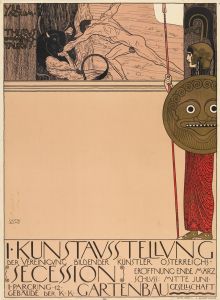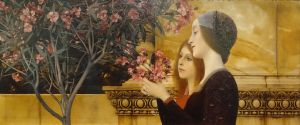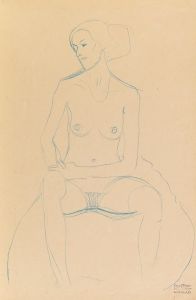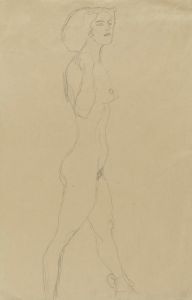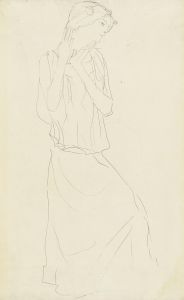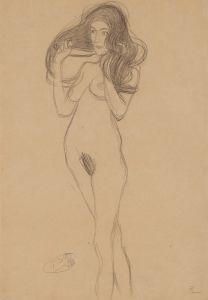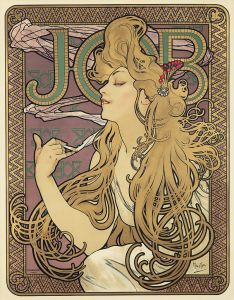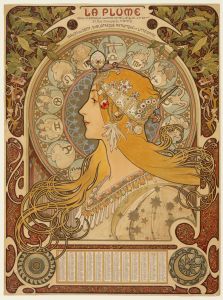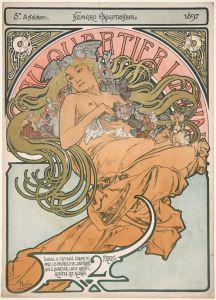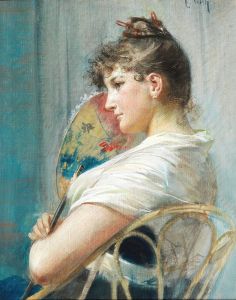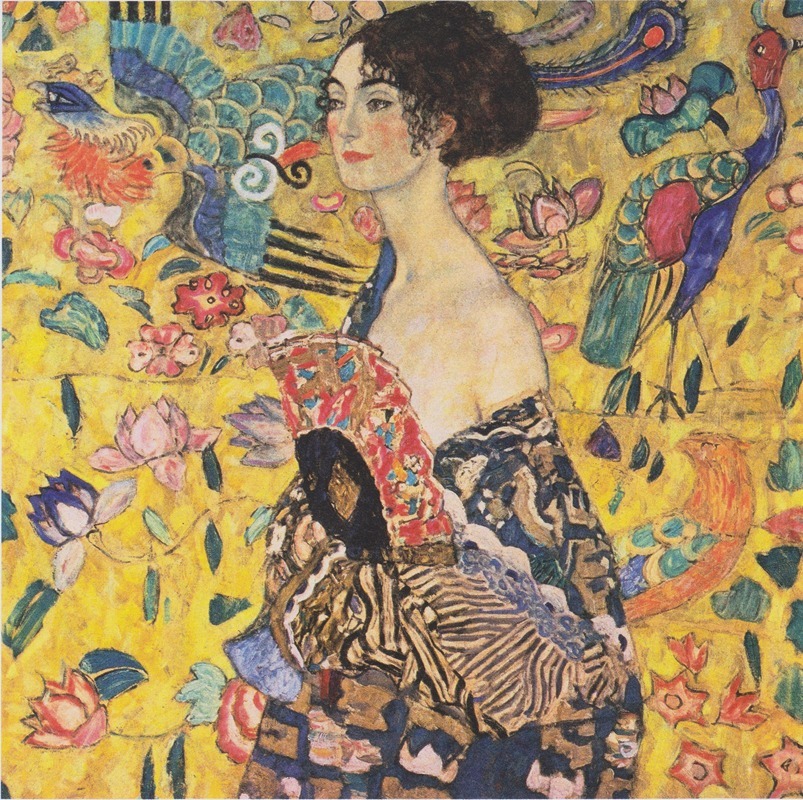
Woman with fan
A hand-painted replica of Gustav Klimt’s masterpiece Woman with fan, meticulously crafted by professional artists to capture the true essence of the original. Each piece is created with museum-quality canvas and rare mineral pigments, carefully painted by experienced artists with delicate brushstrokes and rich, layered colors to perfectly recreate the texture of the original artwork. Unlike machine-printed reproductions, this hand-painted version brings the painting to life, infused with the artist’s emotions and skill in every stroke. Whether for personal collection or home decoration, it instantly elevates the artistic atmosphere of any space.
"Woman with Fan" is an oil painting by the renowned Austrian Symbolist painter Gustav Klimt. Created in 1917-1918, this artwork is one of Klimt's later works, completed shortly before his death in 1918. The painting exemplifies Klimt's mature style, characterized by its decorative elegance, vibrant colors, and intricate patterns.
The painting depicts a woman holding a fan, a common motif in Klimt's portraits. The subject is portrayed in a half-length pose, gazing slightly to her left. Her expression is serene and contemplative, capturing a sense of introspection. The fan she holds is richly detailed, adding an element of exoticism and mystery to the composition.
Klimt's use of color in "Woman with Fan" is particularly striking. The background is a tapestry of floral and abstract patterns, rendered in a palette of golds, greens, blues, and reds. This decorative background is a hallmark of Klimt's work, reflecting his interest in the interplay between figure and ornamentation. The woman's attire is similarly adorned with intricate patterns, blending seamlessly with the background and creating a harmonious visual effect.
The painting is notable for its lack of a specific narrative or symbolic meaning, which is a departure from some of Klimt's earlier works that often contained allegorical or mythological themes. Instead, "Woman with Fan" focuses on the aesthetic qualities of form, color, and pattern, emphasizing Klimt's interest in the decorative arts and his mastery of the medium.
Gustav Klimt was a leading figure of the Vienna Secession movement, which sought to break away from traditional academic art and embrace new forms of expression. His work is often associated with Art Nouveau, a style characterized by its ornamental and organic forms. Klimt's paintings frequently explore themes of beauty, sensuality, and the complexities of the human condition, often featuring women as central subjects.
"Woman with Fan" is housed in the Belvedere Museum in Vienna, Austria, which holds one of the most significant collections of Klimt's works. The painting is a testament to Klimt's enduring legacy as a pioneer of modern art and his ability to capture the essence of his subjects through his distinctive style.
Klimt's influence extends beyond his lifetime, impacting subsequent generations of artists and continuing to captivate audiences worldwide. "Woman with Fan" remains a celebrated example of his artistic vision, showcasing his unique approach to portraiture and his innovative use of color and pattern.






